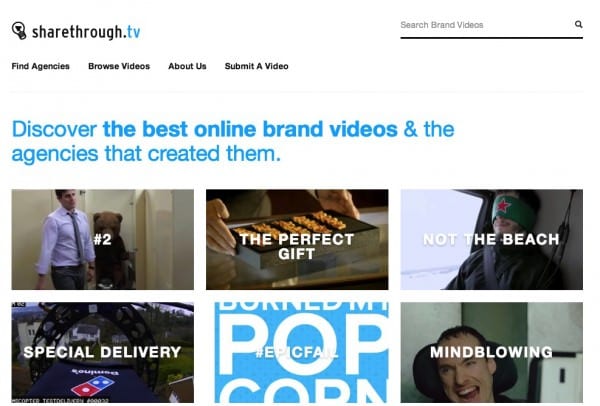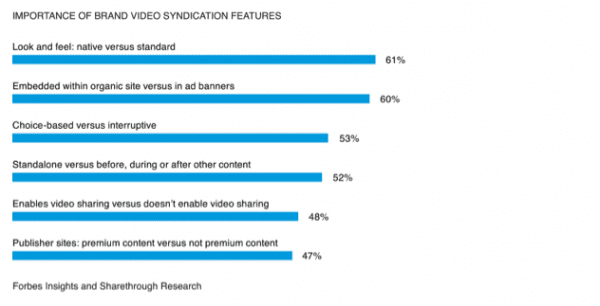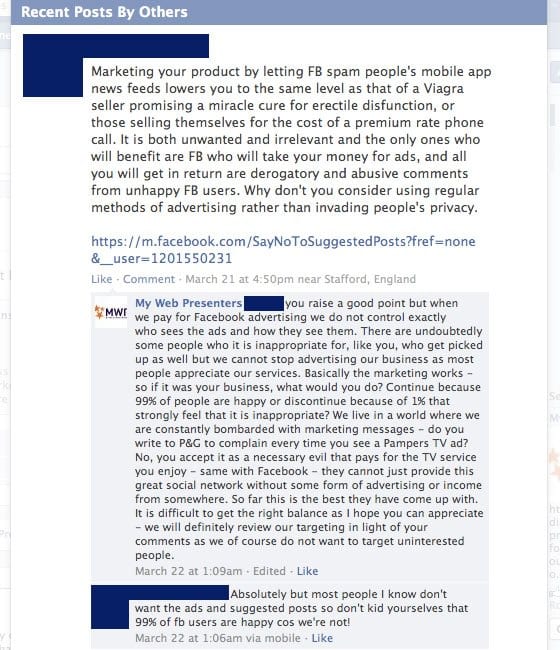A briefing and research on native video advertising effectiveness
Native video advertising is potentially quite controversial. The term refers to advertising that is designed to blend in with the page it is placed on. In other words, it is advertising that is trying to look like it isn’t advertising. Genius? Or just sneaky? Native video advertising is watched by viewers by choice. The power of choice over being ‘forced’ to watch is undeniable. When a viewer chooses to watch an advert the impact on branding is far more positive than when a viewer has no choice.
In this article I am going to share the findings of two recent research studies into the effectiveness of native video advertising. I am going to look at the value of the findings and also raise some questions about the ethics of a native approach.
Sharethrough
Sharethrough are a native advertising platform who believe in thoughtfully integrated brand content rather than box/banner/pre-roll ads that visitors are coerced into watching. In this promo video, Sharethrough tell you what they do and why.
Sharethrough claim to have worked with most of the Top 25 AdAge Megabrands like Coca Cola, GE, Microsoft, Puma and Toyota. You can view examples on Sharethrough.tv.

To quote, Sharethrough believe they are “moving the market to a place where advertisers, instead of interrupting you, actually produce and distribute content that entertains and engages. And to a brand, that’s the Holy Grail”.
Research study 1 - Going Native: how marketers are reinventing the online video advertising experience
Forbes Insights and Sharethrough Research teamed up to conduct a study into the market’s enthusiasm towards native video advertising. The study involved quizzing 136 marketing executives from leading brands including Intel, Honda and Heineken. The study recognises that whilst there has been a significant increase in the amount of branded online video content, traditional advertising tactics, which involve interrupting the viewer, are doing less well.
The results
The term ‘native video advertising’ hasn’t quite caught on in the world of marketing just yet. However, the results of this research showed that marketing executives certainly do appreciate many of the attributes associated with native video advertising tactics. Some of the largest platforms have paved the way for native advertising. For example, Facebook, Twitter and YouTube have all started using native advertising embedded into their own look and feel.
The graph below shows the features of native advertising that the marketing executives felt to be important.

Limitations of the research
This study can only really reflect the brands involved in the study. 66% of the brands in the study have marketing budgets of over $1million dollars annually and with a limited 136 respondents the results can’t be taken as representative of the wider industry.
12% of the 136 respondents said that they had spent money on native video advertising. 49% said that they were planning to invest in it and it can be assumed that the rest have no particular interest or desire. In terms of solid data, it seems that this study can only make a small offering.
What the results do show is that marketers do recognise that native video advertising has the potential to be an extremely effective route for distributing branded video content. In fact, 23% did say: “native video has become a top media distribution tactic.”
Research study 2 – Native ads versus pre-roll
A more recent advertising study carried about by Sharethrough and Nielsen claims to demonstrate why choice driven advertising beats the old-school interruption methods. Sharethrough recognised that ‘native advertising’ has been a buzz term of late, but that there has been a lack of concrete evidence to support its supposed effectiveness. This study therefore compares the effectiveness of native video adverts against pre-roll video adverts.
In this study, Sharethrough worked with five advertisers. They created and distributed the same advertising message in pre-roll ad formats and in native ad formats. Nielsen Online Brand Effect was used to analyse the effectiveness of both methods and provided detailed metrics on brand lift and the campaign factors behind that lift.
The results
The results showed that native advertising had a higher brand lift across each of the five campaigns in the study. In other words, in each of these five cases, native advertising proved itself to be 100% more effective than pre-roll ads. One campaign was for soft drink brand Jarritos. Native adverts for this campaign generated a brand lift of 82%. In contrast, the brand lift was a meager 2.1% for users who saw the pre-roll ads.
Not only did native advertising prove to have a more positive impact, pre-roll adverts were actually found to be having a negative impact on viewers opinions of the brand: users were “more likely to have negative brand opinions after being exposed to the pre-roll creative than the native ads.”
To be fair, it always seemed obvious that choice-based native advertising would have a more positive impact than interruptive methods. However, there is now some concrete data to prove the point.
Native video advertising and ethics
A Facebook user was recently quite unimpressed by a My Web Presenters advert that he saw on Facebook. See the screenshot below to get a sense of his argument. It is an experience most of us can associate with and highlights the biggest argument against native advertising.

Native advertising is essentially very similar to advertorial. It is content that is placed strategically to make it look integrated with the usual output of a particular publication. When it comes to written content, publishers concerned about integrity will include a disclosure in any content that is deemed ‘advertorial’.
It is not obvious that Facebook’s ‘promoted’ or ‘featured’ items are paid for by the advertiser – there is no disclosure other than a very small "promoted" mention below the post. However, we all know exactly what it is we are looking at. It is therefore understandable that some users, like the one above, are unhappy to see this in their feeds - feeds which they will have customized via their ‘friend’ & ‘like’ selections over time.
‘Native advertising’ does seem to be a term that describes what clever marketers have been doing since the birth of marketing. It could be argued that advertising has come full circle again because we are back to the beginning where marketers need to produce content that people want to engage with.
Now that platforms like Sharethrough are demonstrating the value of what is being classed as ‘native’ advertising, marketers have big decisions to make about how to carve out their budgets in future.









